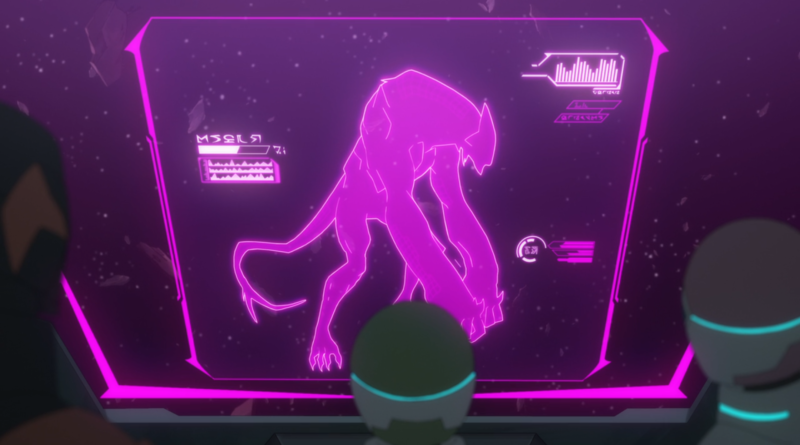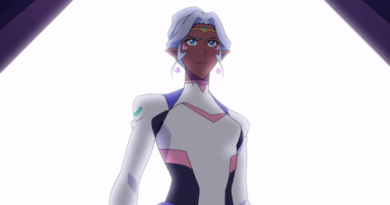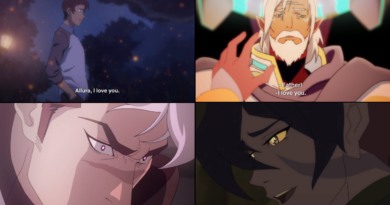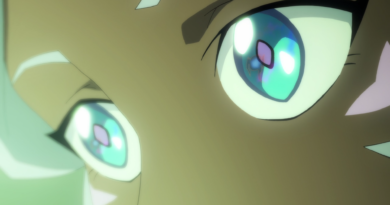R&A Commentary: The Prisoner’s Dilemma
Links
E1 “Launch Date” – R&A / Commentary / Netflix
E2 “Prisoner’s Dilemma” – Netflix
S7 Reconstruction – Part 1 / Part 2 / Corrected Cliffhanger
Corrected Screencap by ArinacoSuomi
Transcript
Welcome to Team Purple Lion’s reconstruction of VLD Season 8, Rise and Atone. Thank you for watching Episode 1 and our commentary on it, and if you haven’t, links to both can be found below. Work on Episode 3 “Genesis” is coming along well. Please do keep an eye on our social media for updates, as well as when to anticipate an episode drop. In the meantime, we are happy to present to you our commentary on Episode 2 “Prisoner’s Dilemma”, which can be watched in full on Netflix. As always, Team Purple Lion ourselves and Rise and Atone are entirely ship neutral, and this commentary is to provide an analysis of the plot structure and characters for educational and personal entertainment purposes only.
With “Prisoner’s Dilemma”, we could tell the contents are primarily unaltered from their original version, but without the necessary payouts in the latter half of the season, this story makes very little sense. For the most part, the animation and audio are normal with no major scenes cut out or rearranged. For this reason, we chose not to alter this episode and upload it here, but instead we present to you this example during Warlord Lahn’s monologue, where Pidge has been recolored to look like Allura. Out of the main cast, Allura is almost exactly Lance’s height, and the body language is distinctly closed-off compared to how Allura typically carries herself. Pidge, however, is the only Paladin significantly shorter than Lance, and she frequently stands with her arms crossed and shoulders hunched. Since no one other than Lahn is speaking, it’s easy enough to swap them out. A special thanks to Twitter user ArinacoSuomi for posting a correction when Hate pointed it out on Twitter.
Since the changes are minimal, we direct your attention to the main focus of R&A: the narrative itself. This is still the exposition of the story, and we have to lay the groundwork for what’s to come. A good way to do that is through a microcosm plot, in which a writer will allude to the overarching plot of a story by giving the audience a smaller conflict, such as having to fight a creature in a haunting environment, to represent the major players in the primary plot. It also acts as a way of highlighting features about the primary plot and characters that we as the audience should take note of, particularly details we might not think to pay attention to in the first place. These details can be character flaws, symbolism surrounding the characters, connecting plot points, or any other number of things.
For those of you not familiar with our work prior to R&A, you may be wondering where “Shadows”, episode 2 on Netflix, fits into the episode order. We determined back in the summer that “Shadows” was actually meant to go in season 7. The scenes insert neatly into different episodes, and provide narrative tension by contrasting Lotor’s family life to that of Pidge’s, and the stark differences between Honerva and Colleen. The end of “Shadows” also was meant to be part of the cliffhanger, and if you’re interested in the full explanation, all our videos can be found below.
Now, back to “Prisoner’s Dilemma”. So with leaving this episode unchanged, we are establishing a few things. The first is the consequences hinted at in “Launch Date” and lending weight to Keith’s worries by showing just how much has gone wrong in their absence. The second is how Team V isn’t a flawless team of heroes, and that the rest of the cast does not see them as such. This gives them the opportunity to rise above their mistakes and atone for them, thereby truly earning their heroism. The final thing we are establishing is what the microcosm plot of this episode represents for the primary plot of R&A. So what exactly does this episode represent?
While we don’t want to spoil you on the details of what’s to come in later episodes, it’s easy enough to tell where the plot is going by paying attention to this episode if you know where to look. As with anything, the first place to look is the title. One of our signs that something was amiss with the season 8 on Netflix is that the titles no longer had their layered meanings to them, and some were downright wrong for the contents of the episodes. Every title in VLD has multiple levels that mean different things both within the episode itself and in relation to the season around it. A prisoner’s dilemma is when two people are presented with a choice: they can cooperate and protect each other with some negative consequences, or they can betray the other party in exchange for a potentially better deal. The name comes from the most common example, two prisoners in solitary confinement being asked to betray each other in the hopes of receiving a lighter prison sentence. So in VLD, we see Team V presenting Lahn with a decision: join the Coalition or war. While they don’t verbally threaten him, they make it clear that not joining is not an acceptable answer. But Team V also is acting as a prisoner, because they must cooperate with Lahn in order to undo what’s been done both in the wider universe and with the monster that destroyed his fleet.
Another key detail to pay attention to is the dialogue of Team V during their exchange with Lahn in the beginning. In Allura’s dialogue, we see shades of her early-show self, distrusting the morality of a supply run and outright asking if Lahn was stealing supplies. Keith and Shiro both speak in very authoritative tones, commanding Lahn, and even using dialogue and syntax that are reminiscent of Lotor. Lahn himself calls Keith a half-breed in response, which when framed by the dialogue from Team V, acts as a callback to how full-blooded Galra react to Lotor, and he was their crown prince. That line draws a direct parallel between Lotor and Keith in particular, seeing as how they are both half-Galra, and serves to remind the audience that while they come from very different backgrounds, they are similar in their heritage and are both leaders who are having to make very difficult decisions that can affect billions.
One of the ways this microcosm plot works is by having Allura reach out to the person that Team V hurt, in this case, Warlord Lahn. He has very little reason to trust Team V, and in fact tries to spurn their aid, but when the distress beacon is received, he has very little choice but to go with them. While the exchange with Lahn could represent any number of people that were hurt by Team V’s betrayal and abandonment, one line in particular signals to us exactly what major character Lahn is meant to represent.
[Video description: Keith looking at the rest of the characters as he speaks. The subtitle reads, “Ranveig found the creature in the Quantum Abyss and experimented on it with Lotor’s Quintessence. He trained it to take out his Galran enemies, but he could never control it. The beast couldn’t differentiate between adversities and allies.”]
In this episode, Lotor is not only name-dropped, but it’s his Quintessence that made this Creature. When someone loses control of the Creature, it can’t tell the difference between friend or foe, making it very dangerous to be around if you’re Galra. This episode has an overarching feel of horror and suspense to it, and even a couple of our team members got spooked by the jumpscare when the Creature reveals itself. This summary by Keith not only alludes to the superweapon his mother released in exchange for Keith’s life, but also it alludes to how Lotor made the Sincline ships, and then subsequently lost control of it and himself and could no longer trust anyone during his breakdown at the end of season 6.
With that in mind, it lends more weight to Keith’s very next line.
[Video description: A clip of Keith looking at the others as he explains what happened on Ranveig’s base. The subtitle reads, “Because Krolia and I let it loose so we could escape Ranveig’s base. This is all my fault. I’m sorry.”]
Here is the turning point of the episode, in the middle of the destruction not just wrought by Sendak, an enemy left unchecked, but also by a creature unleashed by actions Keith and his mother took to try and protect each other. While Keith never could have anticipated the harm, and while he himself did not unleash the Creature, he still is owning up to it and apologizing for the impact his decisions leading up to this had. Just as Team V could not have anticipated the destruction that would come from going into battle with Lotor and leaving him in the Quintessence field, it was still a decision that they made. It’s especially important here that Keith apologizes for the Creature, even though his mother is the one who unleashed it, because at the end of season 6, Pidge, Lance, and Hunk all tell Allura that they shouldn’t go back for Lotor. Allura and Keith both protest that, but Keith ignores his and Allura’s own feelings and instead defers to the majority. Neither time is Keith necessarily the driving decision-maker, but as he is the leader of Voltron, he still has to take responsibility for the actions taken, especially when he himself was in a position at the time to prevent the consequences. In the case of Ranveig, he could only react. In the case of the Rift, he could have in theory saved Lotor because he controls Voltron’s movements when all the Lions are combined, but he didn’t. This is a moment setting up for some major growth on Keith’s part to atone for his mistakes as well as learning to trust his judgment as a leader, and his genuine apology is the first step.
With all this in mind, it’s also important to take a closer look at the direct plot of the episode, because the characters may be symbolic of greater themes, but they are also people in this universe. Warlord Lahn represents Lotor in a sense, but he’s also one of the many that Team V has hurt. This is a prime opportunity for them to make this right. The Creature also can represent Lotor, but we must remember that nobody is truly a monster. So as you watch this episode, try to spot the foreshadowing, and pay special attention to the dialogue choices made. Maybe you can tell who the Creature really is, which will be revealed in Episode 5, “Monster”, our first nearly completely comic-drawn episode.
Thank you for listening to this analysis on episode two of Rise and Atone, “Prisoner’s Dilemma”. Please be sure to watch the full episode on Netflix, and we encourage you to let us know your thoughts about the episode, as well as your thoughts on “Launch Date” and our commentaries. Follow us on our social media for updates as we work on episode three “Genesis”, and we will meet you at the pyramid. Vrepit Sa!



